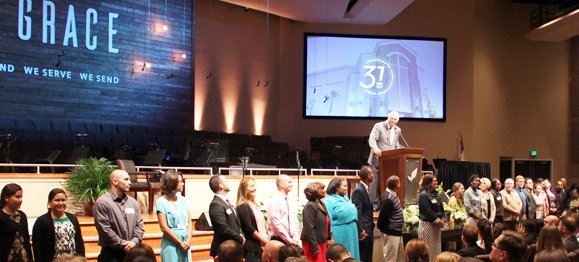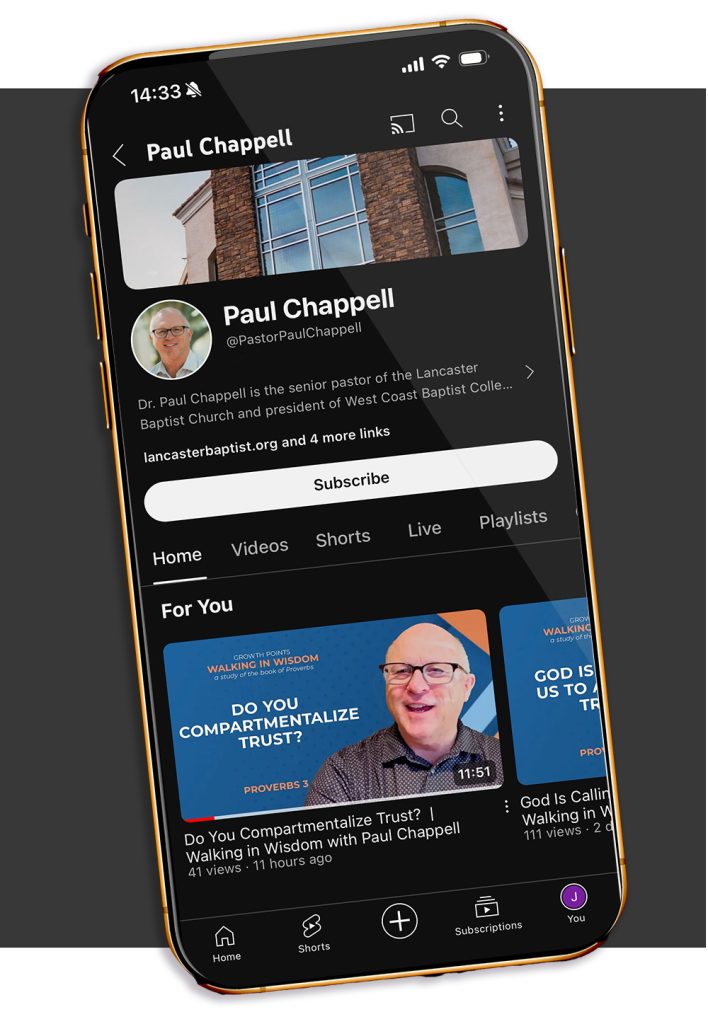
A dream without a plan is a wish.
So, as a pastor or local church ministry leader, it’s not enough to simply have a dream to make a big impact for Christ in your community and to see many people come to Christ. You need a developed plan.
Of course, we know that when it comes to the work of God, we are absolutely dependent upon God! So I’m not suggesting churches develop a plan that could “work” without the Holy Spirit convicting and changing hearts or without the power of prayer.
But I am suggesting that churches need a clear process that reaches from the earliest steps of making contact with someone to seeing them saved, baptized, added to the church, and grounded in their faith. This kind of process helps you be proactive as a “laborer together with God.”
So how do you move from hoping to reach people in your community to assimilating people into the church?
1. Canvass—reaching your community
So, as much as in me is, I am ready to preach the gospel to you that are at Rome also. For I am not ashamed of the gospel of Christ: for it is the power of God unto salvation to every one that believeth; to the Jew first, and also to the Greek.—Romans 1:15–16
It all begins with soulwinning and outreach into the community.
The job of the church is not to wait for people to come to us; it is to obey Christ’s Great Commission and “Go ye” to them (Matthew 28:19).
The job of the church is not to wait for people to come to us; but to obey Christ’s command to go. Share on XGet a stack of tracts or gospel brochures and begin going house to house in your community to reach people with the gospel. Develop a plan for systematically reaching every corner of your community and engaging every demographic with the gospel. (For a detailed suggestion of structuring a church outreach program, see Out of Commission.)
2. Connection Group—demonstrating you care
A bishop then must be…given to hospitality, apt to teach;—1 Timothy 3:2
A connection group can be like a spiritual greenhouse providing acceptance, love, fellowship, biblical teaching, and even accountability for young Christians.
We’ve called these groups various things over the years—Sunday school, adult Bible classes or fellowships, and recently connection groups. Whatever you call it, it is important that you are providing care for guests and young Christians.
For our church, it has been important to continue adding new classes as our membership has grown. Even when we were running about one hundred, we had at least two adult Sunday school classes. More classes allows for each class to be more specific to the life stages of those attending (married, parents, single, unsaved spouse, etc.)
3. Core Class—committing to biblical doctrine
Rooted and built up in him, and stablished in the faith, as ye have been taught, abounding therein with thanksgiving.—Colossians 2:7
Once a quarter, I teach a three-week class for those who have been recently saved or are newer members called Core class. (We used to call this Starting Point.) The class takes place during the same time as our Sunday morning connection groups.
In these three weeks, I teach basic doctrine and practice regarding the local, New Testament Baptist church. We cover Baptist distincitves, the purpose of the local church (as well as the history of our church), our church statement of faith, how missions works, the importance of soulwinning, and more.
However you do this in your church, you need some kind of way to be sure that people who are coming into the church understand what you believe, what the Bible teaches, and what to expect. This allows them to commit to the doctrine of your church and to biblical involvement with their church family.
4. Continue Discipleship—grounding young Christians in the faith
Then said Jesus to those Jews which believed on him, If ye continue in my word, then are ye my disciples indeed;—John 8:31
And the things that thou hast heard of me among many witnesses, the same commit thou to faithful men, who shall be able to teach others also.—2 Timothy 2:2
Young Christians need to be grounded in their faith and taught what it means to live as committed followers of Christ.
One of the best ways we have found to engage young Christians in this process is through a formal discipleship program. We use Continue—a fourteen-week, one-on-one study. This takes place on our church campus during the midweek Bible study, which provides childcare and encourages young Christians to develop of a habit of attending midweek service.
Assimilating people into a local church doesn’t have to be complicated. (These four steps are relatively basic to local church ministry.) But it does require clarity and diligence.
Assimilating people into a church doesn’t have to be complicated but it does require diligence. Share on XCanvass > Connection > Core > Continue—that’s our process. Each church will handle this process a little differently. But it is so important that you have a process and that you are actively leading people through it.



